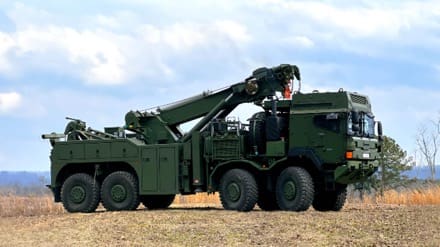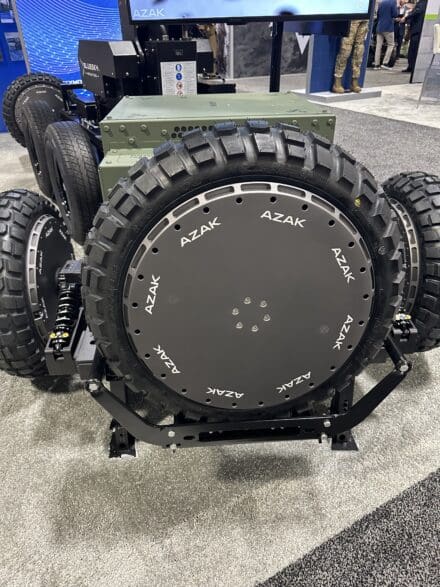The Canadian government has awarded Rheinmetall a major order for the production of 85 heavy recovery vehicles to the Canadian Armed Forces (CAF) as part of the Enhanced Recovery Capability (ERC) project. The five-year purchase agreement, worth $325 million CAD (around €215 million), includes vehicles, recovery equipment and other modifications. The first deliveries are scheduled for 2027. A supplementary $28.9 million CAD (around €20 million) multi-year in-service support contract has also been awarded to Rheinmetall.

Serving as prime contractor, Rheinmetall Canada will replace the CAF’s heavy logistic vehicle wheeled recovery fleet with 85 HX 8×8 trucks, each equipped with a heavy towing and recovery module. This will provide the CAF with enhanced capabilities to effectively recover and tow their latest generation of heavier armoured and logistical vehicles. The new HX heavy recovery vehicles also provide additional capabilities, such as an integrated rotary crane that can be used for container handling and for other crane work.
Rheinmetall HX: a best-in-class, combat-proven flagship
Purpose-built for military end users and characterized by high mobility, reliability, and durability, the HX represents a long-term solution for Canada. It will provide logistic support to combat forces anywhere on the battlefield, even in the most stringent conditions. The HX recovery truck will also offer a high level of protection, significantly increasing soldiers’ survivability and mission success.
In terms of maturity, Rheinmetall’s flagship has been reliably serving military customers in the United Kingdom, Australia, New Zealand, Germany, Norway, Denmark, Sweden, Slovenia, Singapore, and Japan in a variety of operational scenarios, from domestic disaster relief and humanitarian support, to combat operations in harsh operating battlefield environments encountered in Iraq, Afghanistan, and Mali. This international distribution of HX trucks brings major advantages when it comes to interoperability and logistics among NATO partners.
The ERC team: world-leading partners offering a unique solution
The ERC project team will be led by Rheinmetall Canada, a leading system integrator in the defence and security industry. Rheinmetall Canada will be supported by Rheinmetall MAN Military Vehicles, a German-Austrian world-leading logistic vehicle manufacturer; Miller Industries Towing Equipment, a premier supplier of towing and recovery equipment located in the United States; and Rotzler Holding, a leading manufacturer of hydraulic winches and winch systems based in Germany with operations in Canada.
“Together, this strong team will provide a sophisticated best-in-class recovery solution that will enable the CAF to fulfil its tasks in support of Canadian national interests. This vehicle is an extraordinary system which will meet Canada’s needs for decades to come. Moreover, Canada is now joining an elite group of operators of the HX recovery platform and will benefit from other nations’ experience with the system.” stated Pietro Mazzei, President and CEO of Rheinmetall Canada.
“We are very grateful to be able to welcome Canada as a new member of the HX user group,” stated Michael Wittlinger, CEO of Rheinmetall MAN Military Vehicles. “With the heavy recovery vehicle, the HX fleet is now prominently represented on the North American continent for the first time. Our mission-proven vehicle family is increasingly becoming the backbone of the logistics forces of NATO and allied nations.”
Significant industrial and economic benefits for Canada
The benefits of the ERC project will be felt across Canada: it will create high-tech career opportunities at both Rheinmetall Canada and its Canadian suppliers, in addition to generating a number of valuable investments throughout the country. With over 1,5 billion Canadian Dollars in Industrial Technological Benefits (ITB) and Industrial and Regional Benefits (IRB) credited since the company was founded just over 35 years ago, Rheinmetall Canada is one of the leading companies for delivering ITBs, IRBs, job creation, and economic growth to Canada.




















































































































